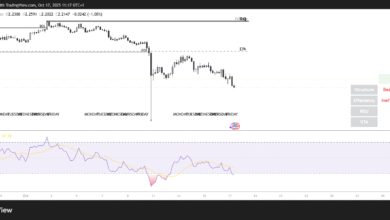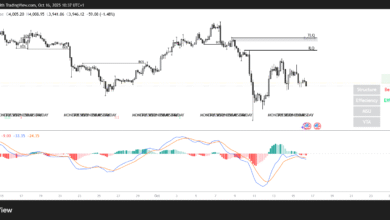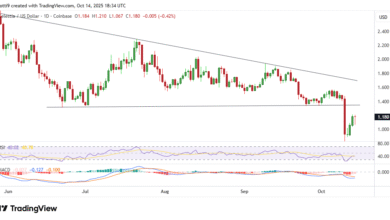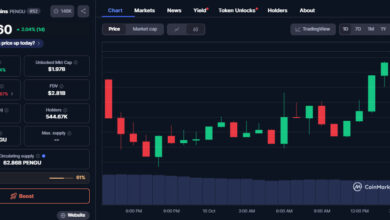Can Crypto Crash: Learn About The Market Volatility

Crashes of cryptocurrencies can be thrilling and alarming. Millions of dollars can either disappear or be made in an instant.
What, though, if there had been a way to figure out what these market swings were all about? What if you had greater confidence to negotiate the choppy waters of cryptocurrency investing, saving, or earning large sums of money?
This article will clarify the fundamental reasons for “why crypto is crashing,” the function of fear, uncertainty, and doubt (FUD), and the significance of risk management. You will be more prepared at the end to take advantage of the chances and overcome the obstacles in the ever-changing cryptocurrency industry.
The Principle Reasons for Crypto Crash
Many ICOs promise investors to win BTC, but regulatory changes, market manipulation, and macroeconomic events are among the reasons why crypto crashes occur. These factors add to market volatility, particularly during a crypto meltdown, which presents a challenging environment for investors and enthusiasts in the cryptocurrency space.
This section will provide a deeper knowledge of the erratic world of cryptocurrency investing. It will also reveal the underlying reasons for crypto crashes and their consequences for market stability.
Regulations
Tightening monetary policy is one regulatory adjustment that can directly affect cryptocurrency prices and breed uncertainty. The way that different nations see cryptocurrencies differs tremendously; they take varied tacks, from strict laws to more lenient ones. As a result, many individuals have exchanged their cryptocurrency wallets for fiat money.
Bitcoin’s price, among other cryptocurrency prices, has fluctuated as a result of recent legislative reforms. Crackdowns on cryptocurrency businesses and conjecture over possible regulatory developments bring market instability and sell-offs. Investors’ buys and sells of cryptocurrency assets in reaction to the uncertainty could cause price swings and more market turbulence.
Trading Market Manipulation
In cryptocurrency, “market manipulation” is deliberately distorting the value or volume to one’s benefit. Fictitious price changes caused by techniques like pump-and-dump scams, wash trading, and spoofing can cause market swings and even crashes.
Whale behavior is the control by big crypto investors or groups of considerable amounts of a particular cryptocurrency, which can significantly impact market values. Making better selections and shielding oneself from its negative impacts are possible for investors who understand the principles of market manipulation.
Macroeconomics Operations
Macroeconomic events such as market crashes and worldwide economic crises can significantly impact the cryptocurrency market. When the conventional financial markets are turbulent, investors could turn to cryptocurrencies, which would raise demand and cause price swings.
Nevertheless, the reason for a stock market collapse determines the connection between the value of cryptocurrency assets and the causes of financial market collapse.
Understanding the Investor Psychology
Risk aversion and herd mentality, among other investor psychology, might worsen market volatility. Price swings and illogical decision-making might result from herd mentality, the propensity of people to do what a more significant number does.
Preferred safer investments, or risk aversion, can affect trading decisions and exacerbate market volatility.
Knowing these psychological elements can assist investors in creating plans to offset their impact and make more reasonable choices in the face of market volatility.
Influence of High-Leverage Trading
Crypto crashes can be exacerbated by high-leverage trading when margin calls and bankruptcy drop prices. Because leveraging enables traders to manage a bigger position with less money, gains, and losses are more likely.
This part will examine how high-leverage trading affects market volatility and provide ways to lessen such effects.
Margin Calls and Symmetry
A cryptocurrency may crash if margin calls and liquidations have a big enough effect on its price. A trader triggers margin calls when their margin account value falls below the minimum amount specified by the stock exchange or broker.
Concurrently, liquidations happen when a trader closes a leveraged position because of insufficient cash. A selling pressure cascade may result in more price declines and market volatility. For a better trading experience, connect with trading bots like Gas Profit App that hello you trading symmetry.
Investors can shield themselves from margin calls and liquidations’ negative consequences in market volatility by being aware of their possible risks.
Managing Risks: Strategies To Know
High-leverage trading can have its effects lessened by implementing risk management techniques. Within these tactics are:
- Setting restrictions on the total capital to be invested in each trade
- spreading money around several cryptocurrencies
- placing stop loss trades to limit possible losses.
- Followers of these risk management techniques can lessen the impact of possible losses and keep their attention on their open positions and total accounts.
The Future Ahead
Going ahead, the prospects for cryptocurrencies are still bright yet tricky. Investors will need to negotiate these choppy waters to grasp the underlying reasons for market volatility, which include macroeconomic events, market manipulation, and legislative changes. The way regulations develop will affect the value of cryptocurrencies and investors’ actions. Making wise selections requires understanding the effects of market manipulation strategies, including pump-and-dump scams and whale behavior.
Furthermore, macroeconomic variables will be necessary, as the state of the world economy affects the demand for and stability of cryptocurrency prices. The herd mentality and fear of risk, among other aspects of investor psychology, will continue to be significant elements in market dynamics. The need for efficient risk management techniques will be highlighted because high-leverage trading will keep worsening market swings.
Thorough risk management measures, such as diversifying assets, putting stop-loss orders in place, and carefully controlling leverage, will assist investors in reducing possible losses. In the choppy cryptocurrency market, cutting-edge trading technologies like Quantum AI can improve decision-making and trading symmetry even further.
As the Bitcoin scene develops, investors must be knowledgeable and flexible to take advantage of possibilities and control dangers. By knowing and foreseeing market forces, investors may more successfully negotiate the challenges of cryptocurrency trading and set themselves up for long-term success.





